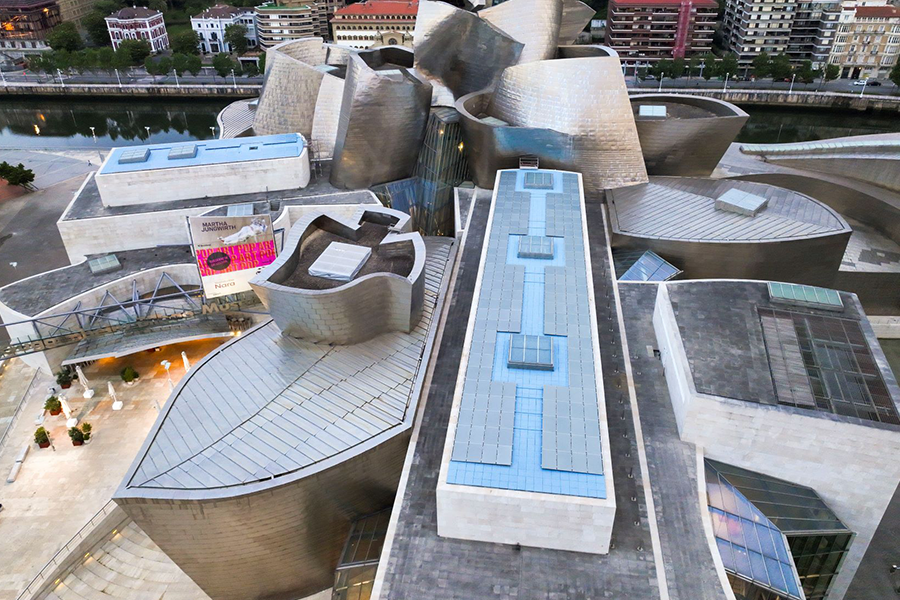From pv magazine Spain
The 80 kW photovoltaic installation at the Guggenheim Museum Bilbao, which began in January, consists of 300 solar panels and will enable annual self-consumption of 80 MWh and a saving of around 5% in the museum's electricity consumption, providing an average of 30% of the total electricity demand of the building — enough to cover the lighting needs of all the exhibition halls.
The solar panels have been installed on the two largest roofs of the building in such a way that they are not visible from the street and are integrated into its architecture. The modules used are from the Italian manufacturer FuturaSun, Jose Alonso, director of Sunfields, Spain's official distributor of the brand, told pv magazine. The FU 360 M Silk Plus Silver 360 W model, according to the manufacturer, allows for maximum chromatic integration of the PV installation on the roof with light grey covers, but also with metal cladding.
This module has contributed to preserving the architectural uniqueness of the building, which has been a great challenge in the development of the project. The design and color of the panels, in keeping with other elements such as the skylights, and even the covering of the corridors between the panels, have been approved by architect Frank Gehry and the Bilbao City Council.
The array, built by Iberdrola Spain with its installer, the Basque company Bikote Solar, and in collaboration with the museum's executive architect, César Caicoya, is one of the main sustainable initiatives that the Guggenheim Museum Bilbao has carried out since 2019.
It is also one of the actions included in the Guggenheim Museum Bilbao's 2024-2025 environmental sustainability plan, which includes a commitment to move towards carbon neutrality by 2030. The project was financed by the European NextGenerationUE funds, managed by the Basque Energy Agency.
The museum reported that from June 1, 2024, 100% of its supplied electricity has been renewable, allowing its carbon footprint to be reduced by more than a third. The museum has reduced its gas consumption by 35% and its electricity consumption by 6% since it began to apply temperature and relative humidity control parameters better adapted to outdoor conditions in 2022.
The museum will continue to test different materials with the aim of being able to reuse and recycle all the elements used in the exhibition sets. This year, in the small-format exhibition Learning Through Art, biodegradable paint and 100% recyclable wood fiber boards were used for the first time with positive results.
The museum will also intensify the use of rental packaging instead of newly built boxes, as well as virtual supervision in the transfer and installation of works that travel between institutions, a technology implemented in 2020 that allows staff travel to be reduced.
This content is protected by copyright and may not be reused. If you want to cooperate with us and would like to reuse some of our content, please contact: editors@pv-magazine.com.



Legislation should be passed that requires all new builds,residential, commercial, and industrial, to meet minimum sustainability requirements.
The details can be argued about but should be much more stringent than at present.